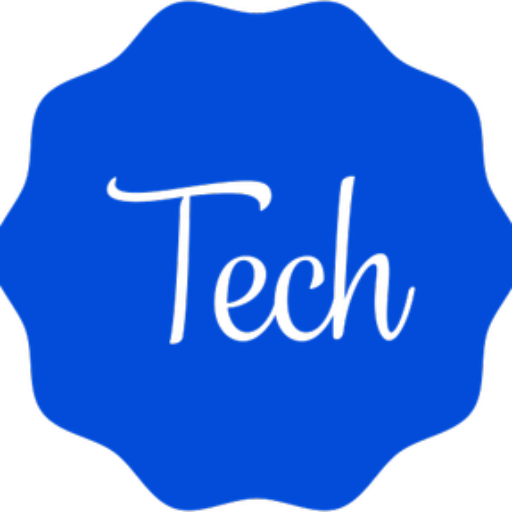The Impact of Technology on Contemporary Nursing: Opportunities and Challenges
As nursing practice evolves, technology plays an increasingly vital role. The ramifications of merging nursing practice with healthcare technology have resulted in previously inconceivable levels of patient care. It is safe to say that nursing practitioners today face both possibilities and potential threats that will affect future nursing growth.
Healthcare technology may now be used for secure communication, accurate analysis, and easily available data, allowing nursing personnel to do their duties more efficiently. Finally, the impact of technology on nursing practice is apparent and will propel healthcare forward in the future. MyAssignmenthelp.com can guide you with this and many more such Quantitative research topics.
In this blog, as of now, we will concentrate on the impact of technology on nursing and will have a look at the opportunities and challenges.
New Technology in Nursing
- Predictive Analysis
Predictive analytics is a novel nursing tool that has great potential for improved patient outcomes. Predictive analytics, with the use of AI, evaluates data from previous patients to recommend a course of therapy with the best probable outcome.
Aside from treatment plans, predictive analytics enables health care practitioners to quickly analyze patient data, saving time and improving patient outcomes. For example, AI may detect the need for a blood test faster than a person, resulting in faster test collection and, eventually, faster results.
- Clinical Mobility
Are you familiar with the concept of clinical mobility in healthcare? It involves the use of handheld digital devices like mobile computers, tablets, and smartphones by healthcare professionals in hospitals and clinics. By providing real-time patient data to the care team, these devices make it easier for nurses to perform their duties more efficiently and improve patient outcomes. Moreover, clinical mobility technology can help doctors and patients by improving workflows and providing better-informed clinicians. With the incorporation of innovative clinical mobility technology into nursing, operations that were once time-consuming can now be expedited, allowing for effective communication of information with the entire care team and the patient’s family. Overall, clinical mobility technology has the potential to significantly improve patient care quality and healthcare efficiency.
- Mobile Robotic Systems
In addition to caring for patients, nurses must manage a wide range of daily tasks, from allessaywriter.com to monitoring vital signs and dispensing prescriptions to keeping accurate records and communicating with patients’ families. The chronic nursing crisis has made it more difficult than ever for nurses to balance rigorous on-the-job obligations with appropriate time for direct patient care. Fortunately, several options are available in the realm of mobile robotics.
Robotic technologies can assist nurses in identifying health and safety hazards and making more educated patient decisions by collecting vast amounts of reliable data. Technology, particularly robotic technology, has a reputation for being cold and impersonal, which can turn people off. According to a recent study, the majority of patients are excited about the deployment of mobile robots in healthcare settings.
- AI in Clinical Decision Support
As a patient, it can be overwhelming to make decisions about your diagnosis and treatment plan. Fortunately, there are tools available that can help you make informed choices. With the help of AI, data can be transformed into knowledge, providing you with crucial information for your next steps.
For nurses, AI technology offers valuable clinical decision support. Here are some advantages of using AI in clinical decision-making:
- The ability to quickly analyze large amounts of data, accurately identifying those at risk.
- The capability to identify gaps in care and advocate for necessary interventions.
- Streamlined User Interfaces
Are you aware that numerous nurses are still utilizing outdated technologies that are causing them exhaustion, disrupted work processes, and increased documentation? According to Health Tech Magazine, digital health user interfaces (UIs) can help streamline their work by making it easier to access patient data. Simplified user interfaces offer benefits such as reduced screen time, dictation technologies that use natural language processing, and access through gestures like voice or vision commands. Additionally, the use of these technologies can significantly improve the overall quality of patient care.
- Remote Patient Monitoring
Remote patient monitoring (RPM) follows a patient’s health outside of the clinical context by employing technology to send patient health data in real time between patients and doctors. RPM is a significant new nursing technology because it lets patients engage in their care from the comfort of their own homes, providing psychological advantages and allowing nurses to stay on top of any changes in their patients’ health.
The following are some of the most widely used RPM devices:
- Blood pressure monitors that are digital
- Continuous glucose monitoring devices
- Oximeters for the pulse
- Heart rate monitors
- Pedometers
- Telehealth
Telehealth, often known as telemedicine, is an important technology that is expected to alter the future of nursing. The word “telehealth” refers to virtual visits between healthcare practitioners and patients in different locations, typically via an internet-based video chat done over a computer, tablet, or smartphone. The capacity to connect patients with the health care system is especially important for patients who live in rural or difficult-to-reach areas who would otherwise face a geographic barrier to care or go without it.
How Will Technology Change Nursing in the Future?
Healthcare technology will be frequently developed and utilized in the nursing profession now and in the near future. Positive outcomes related to new nursing technologies are expected to include the following:
- Human error has been reduced in tasks such as documenting patient information and giving drugs.
- Patient care is being delivered in increasingly convenient ways.
- More human interaction resulting in closer ties between nurses and patients
Technology will revolutionize nursing in the future when new digital breakthroughs are launched. The following are some of the anticipated issues related to this new technology:
- Increased costs for acquiring new technology and training employees to use it
- Increasing patient loads as nurses provide more direct care
- Cybersecurity threats associated with confidential patient health data
- Adoption of new technologies by all nurses, even those with less technical skills
As a nurse, you play a vital role in the adoption of new technology in the healthcare sector. It is crucial that you actively participate in the development and implementation of digital technology to ensure that it is introduced in the safest and most effective way possible. You can demand the use of digital technology to replace outdated systems and perform routine tasks that can be easily automated. Moreover, strong nursing leadership is needed to navigate sophisticated new technologies, such as AI and robotic systems. Transitioning to new technology can be challenging, but the benefits it provides are unparalleled.
Wrapping it up
Technology has forever altered how patients connect with nurses, nurse practitioners, doctors, and other medical professionals. As previously said, technology has enabled advancements in critical areas such as patient monitoring, telehealth, diagnosis, and communication across nursing teams, among others. Given these advancements, the increased use of technology in nursing is projected to continue for the foreseeable future. Technology holds a lot of promise for the nursing profession, with advantages for both nurses and patients.
About the author
Samantha Joseph is a blogger and an educator by profession residing in Australia. She has been linked with MyAssignmenthelp.com for over four years now. She constantly tries to provide all types of assignments, homework, and subject guidance to students as per their requirements. Her services are top-rated and high-rated among students.





